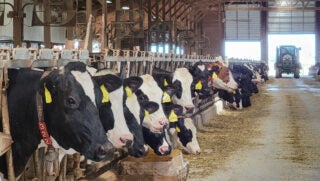This week a new report published by the advocacy group U.S. PIRG tested five wines and 15 beers and found traces of glyphosate in 19 of 20 of them — even organic ones. It’s just the kind of thing mainstream media outlets love to latch onto and make farmers out to be bad guys. U.S. PIRG itself argues that there needs to be a ban on the weed killer and it fully blames agriculture for the glyphosate found in beer and wine.
But there’s always a “but.”
The study does admit that the levels of glyphosate found are not enough to be dangerous, though they claim to still be “concerning.”
William Reeves, toxcologist for Bayer, puts the numbers into perspective.
“Assuming the greatest value reported, 51.4 ppb, is correct, a 125-pound adult would have to consume 308 gallons of wine per day, every day for life to reach the U.S. Environmental Protection Agency’s glyphosate exposure limit for humans,” he said “To put 308 gallons into context, that would be more than a bottle of wine every minute, for life, without sleeping.”
Even those highest findings of glyphosate that was found in wine, 51.4 parts per billion, is far lower than what the activist Environmental Working Group said they found in Cheerios, roughly 500 ppb. And the EWG were widely criticized for making a big deal out of levels that were far lower than what every regulatory body recognizes as significant (and that includes the state of California, which already had stricter limits than most other entities).
In their test results U.S. PIRG argued that,”While glyphosate is found in many places, for many years scientists were uncertain if glyphosate was a public health problem. But that changed in 2015, when the World Health Organization found that glyphosate is a probable carcinogen. In 2017, the state of California also decided to list glyphosate as a probable carcinogen based on the WHO study.”
How many red flags did you count in that last statement? We’re sure you didn’t stop at one.
A major part of U.S. PIRG’s narrative is centered around the 2015 WHO study and California listing glyphosate as a probable carcinogen. This is the same study that has received so much backlash from not revealing all relevant and correct information at the time of publishing.
In this article, Farm Babe explains what happened during those findings. Essentially, an epidemiologist from the U.S. Cancer Institute, Aaron Blair, saw important data that proved glyphosate had no link to cancer. However, he did not bring this information up to the 17 specialists who led the research, and excuses were made as to why this data wasn’t considered.
Following IARC’s findings, many government agencies and organizations opposed the conclusion, including the WHO. They contradicted their own subcommittee’s findings. You would think that other agencies or researchers would no longer use the study, but since it fits their narrative the do not care about the numerous corrected findings.
So what does this all mean for the scary glyphosate found in beer and wine? That someone is trying to capitalize on the fear being spread about Roundup. The study was released on the same day as a federal judge was reviewing the Monsanto case. Coincidence? I think not.
For the future, don’t worry if your beer or wine has glyphosate in it, just be worried on how many you drink of the actual known carcinogen — alcohol.


